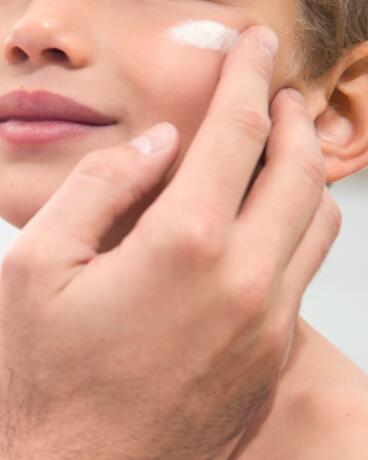Rules for sun exposure

Why can exposure to the sun be so dangerous?
When you go out in the sun, whether at the beach or in town, for an hour or the whole afternoon, you’re always taking a risk. And there are many: sunburn, sun allergy, skin ageing in the form of sunspots, or worse, skin cancer... That’s why it's essential to choose your sun protection and the length of time you spend in the sun carefully, while following a few basic rules for safe sun exposure.

The rules of sun exposure
Depending on the context and type of sun radiation, which varies according to altitude, latitude, season and time of day, it is recommended to protect yourself from ALL the sun's rays (even though UVB rays are the main cause of cause sunburn).
Rule 1: choose the right time to go out in the sun
At "solar noon", or 12pm to 4pm, get in the shade! This is when the sun is at its peak, i.e. highest in the sky: it's the time when UV radiation is most intense and therefore most dangerous. Avoid going out in the sun during this peak time.
Rule 2: clothing protection
Covering up with clothing is the safest way to protect your skin from the sun. So don't skimp on clothing and accessories: wear a t-shirt, hat or cap and sunglasses. This is the winning combination to protect your shoulders, top of your head and eyes. The sun can cause damage to the eyes which can lead to serious vision problems (e.g. cataracts). There’s only one thing to remember: shade and sunglasses from an early age!
Rule 3: sun cream reflex
To protect your skin, choose a good sun protection product with high UV protection, or SPF, that suits your phototype and skin type (sensitive, intolerant or fragile). If you want to tick all the boxes, you should also choose sun protection that has mineral and organic sun filters, is water and sweat resistant, hypoallergenic and fragrance free. Apply your sun protection to all exposed areas, including the neck and the backs of the hands, and (most importantly) remember to reapply at least every two hours, and every time you swim, towel off or sweat.
Rule 4: stay hydrated!
In the sun, you get hot very quickly. To avoid sunstroke and dehydration, remember to drink plenty of water. Whether still or sparkling, from a flask or bottle, it doesn't matter - as long as you remember to drink it!
Rule 5: everything in moderation
The sun can get under your skin, so don't overdo it. Taking breaks between sun exposure allows the skin to "take a breather" before you go out in the sun again. But be mindful of your sun capital and the cumulative effects of the sun.
- Rule 2
- Rule 3
- Rule 4
FRIENDLY, EXPERT ADVICE
When not to go out in the sun (at all)
It's important to avoid sun exposure at all costs in the following cases:
- When the sun is at its peak,
- When you have insufficient sun protection,
- For babies and young children, whose skin is more fragile than ours,
- If you have a sunburn that hasn't healed yet,
- If you’re taking photosensitising drugs (such as anti-inflammatory drugs or antibiotics).
These rules need to be instilled in the youngest children from an early age and should be even more scrupulously observed for children with more fragile skin.
OUR SOLUTIONS TO PROTECT OUR FUTURE
Eau Thermale Avène skin care products designed to protect the skin and respect the oceans
NEWSLETTER
We're always here for your skin!
All our advice on how to take care of your skin day to day.

Which skin care routine should you adopt?
Identify what it really needs with the help of our experts and discover the most suitable skin care routine for you.



